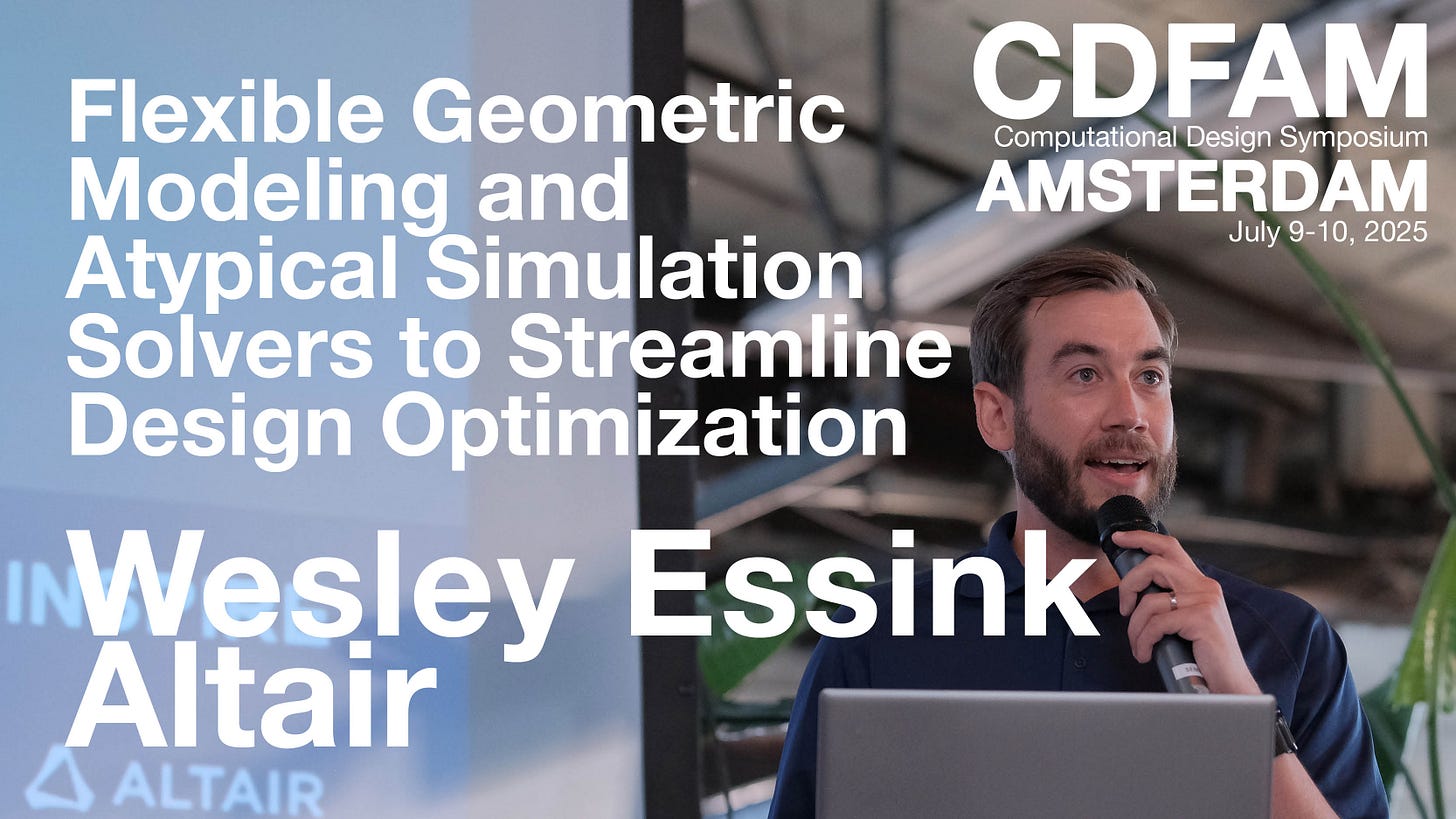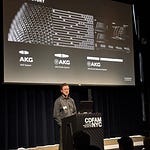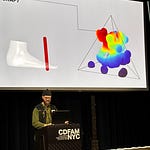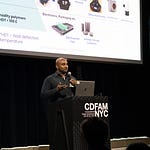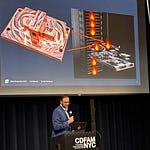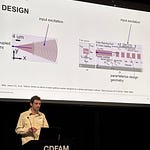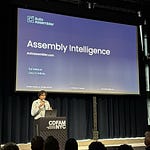Recorded at CDFAM Computational Design Symposium, Amsterdam, 2025 https://cdfam.com/amsterdam-2025/
Organization: Altair
Presenter: Wesley Essink
Flexible Geometric Modeling and Atypical Simulation Solvers to Streamline Design Optimization
Presentation Abstract
Simulation-driven design serves two important purposes: wider exploration of the design space and goal-seeking optimization. Regardless of the regime, the workflow spanning geometry creation, simulation setup, results interrogation and geometry redesign needs to be as seamless as possible to make this approach viable. However, there is often a significant overhead associated with manual, non-value-adding tasks. Examples include converting all geometry into a common representation prior to simulation, meshing for simulation, (re)applying simulation boundary conditions and, finally, making meaningful geometry updates based on simulation results. In this talk, we will showcase some of the approaches and methods we use in Altair Inspire to: Concurrently model with up to four different geometry representations Prepare simulation boundary conditions that remain fixed, irrespective of geometry changes Run simulations on components and assemblies without having to harmonise all geometry into a single representation Prepare a design exploration or optimization to close the loop between design and simulation Automatically update geometry based on the simulation findings These workflows take place entirely within Altair Inspire, which also reduces the need for lossy conversions or file transfers between different software products.


